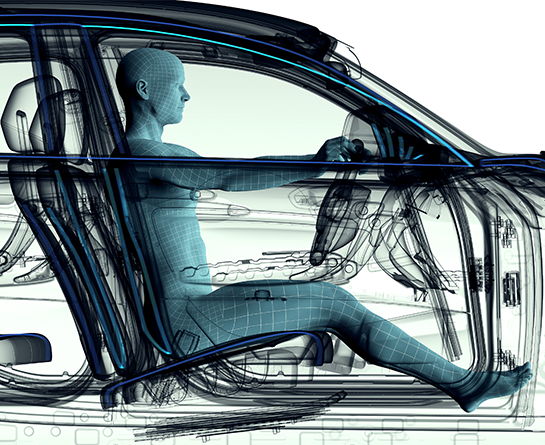Pedestrian safety
Back in the 1940s, drivers were finding it hard to see pedestrian crossings ahead and failing to slow down, especially at night. TRL investigated how to make the crossings more conspicuous. After running many scientific trials of different colours, textures, lightness and wetness, we concluded that wide black and white stripes with flashing lights were the best and most conspicuous design.Those two-foot wide stripes are known today as the zebra crossing. In the first year of their use, the Ministry of Transport saw a 7% reduction in pedestrian casualties. Subsequent regulations required all uncontrolled pedestrian crossings to have zebra markings, giving pedestrians priority.
Driver distractions
Driver distractions are a core reason for road traffic accidents. Our research in the preceding years contributed to the 2003 ban on the use of handheld mobile phones whilst driving. But driver distractions are constantly evolving. Roadside advertising on animated, digital billboards has increased over recent years. We are contributing to an assessment of existing practices and regulations for roadside advertising in Europe. TRL’s work looks at the effects on road safety and identifies likely future developments.Driver fatigue and distraction from ever more sophisticated in-vehicle infotainment systems are also high on the agenda. In other recent studies, we have begun to look at the how operators are affected by automated vehicle safety systems, now that they are expected to remain alert at all times without having control of the vehicle.
Vehicle safety
On behalf of the European Commission, TRL led the European Experimental Vehicles Committee’s project to develop frontal impact test procedures. Europe’s New Car Assessment Programme (EuroNCAP) now provides a recognised standard for vehicle safety performance and has been fundamental in reducing the number of fatalities as a result of vehicle collisions.
Working again for the European Commission, in the last two years TRL has been assessing the new European regulatory safety measures for cars of the future. We’ve developed a three-layer protection model to simulate the compound effect of 17 ground-breaking safety measures. The model accurately simulates the interactions between each feature and ensures they work effectively together to protect road users.
TRL’s Road Accident In-Depth Studies (RAIDS) collect and analyse real-time collision data, working with the police and hospitals. This helps us understand the causes of road collisions and how people are injured as a result. The Department for Transport uses the information to develop safer vehicles and road infrastructure, and for injury mitigation.
Safety assurance of trials
Over the last hundred years, road transport has changed beyond recognition. Today there’s more automation and new mobility solutions are constantly emerging. Trials of connected and automated vehicles (CAVs) are already happening on UK roads: TRL’s independence and proven expertise in vehicle safety means we’re well placed to advise on safety issues. We have set the safety benchmark from the very first trials, for projects including GATEway, Streetwise, DRIVENbyAI and HGV Platooning and the Smart Mobility Living Lab in London. Our unique safety case framework demonstrates to stakeholders that trials are safe and that risks are controlled and minimised.We know about risk management for new modes of transport and have a reputation for scientifically rigorous assessment processes. This means we can help develop effective new standards which will eventually permit the commercial operation of automated vehicles and new mobility services. Our knowledge also informs the new insurance models, legal definitions, vehicle licencing regimes and certification processes needed for automated vehicles and their safety operators.

